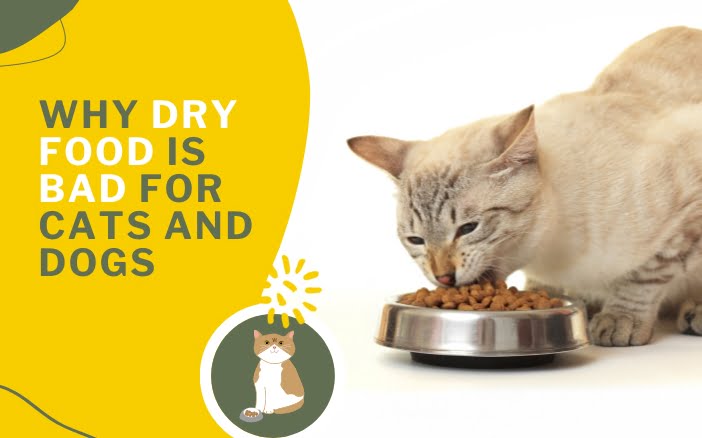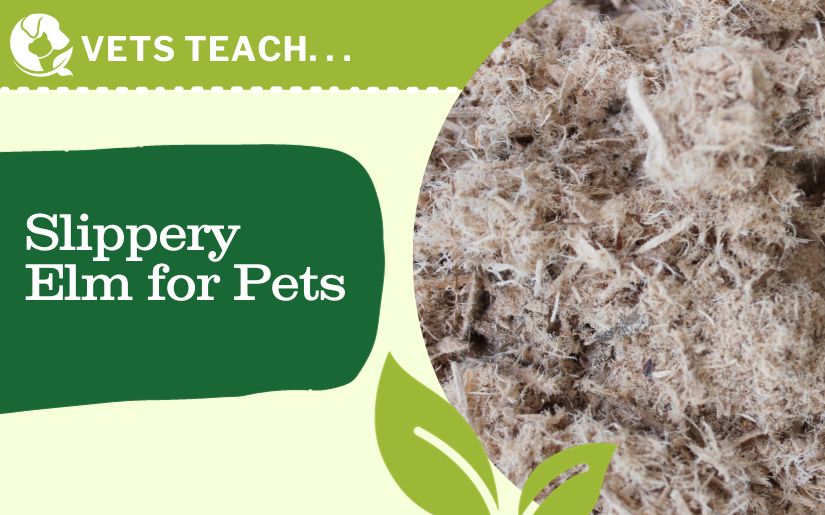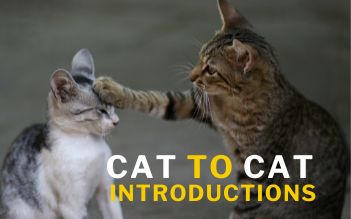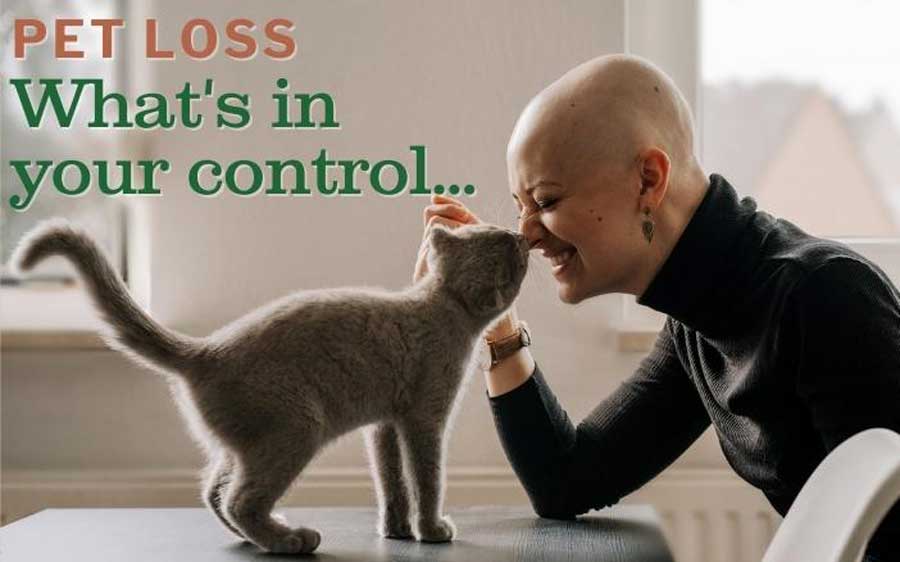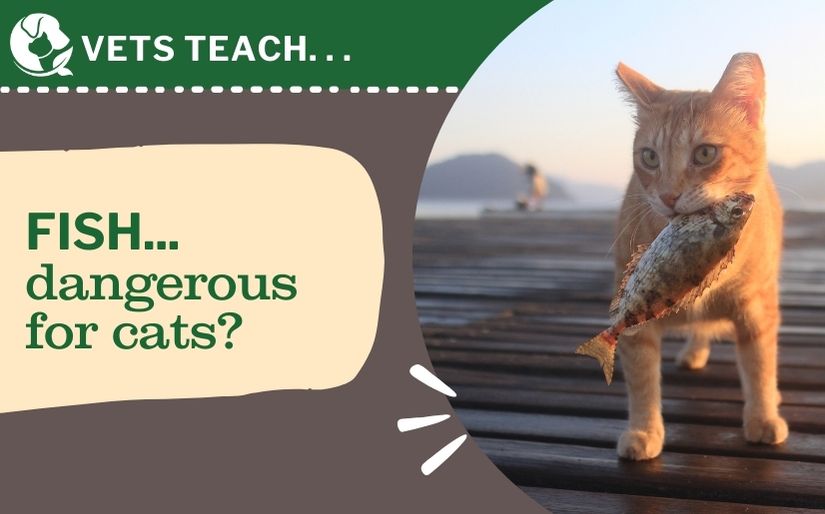
Why Fish is Dangerous for Cats
By Jean Hofve, DVM; Updated 2/2/22.
A lot of cats have learned to love fish, but it’s not a natural feline food; and it’s really not a good idea to feed it to your cat. Why not? Because it is simply not safe to feed fish to cats (and humans should be very careful about eating it themselves, and especially about feeding it to their children!). Here’s why:
Quality
Most fish used in canned pet foods comes from the decaying leftovers of the seafood industry around the world. It is a mishmash that’s high in phosphorus and magnesium, which can be a serious problem in cats with a history of urinary tract disorders or kidney disease. In practice, I have seen many cats develop urinary tract infections and blockages if they eat fish—even canned tuna. After I shared one meal of halibut with my three cats, within hours two of them had urinary tract flare-ups, and by 6 a.m. I had my boy kitty on the surgery table while I inserted a catheter. It’s even worse if, as is most common, the fish are simply ground up, bones and all. Excess phosphorus is dangerous for kitties with kidney disfunction; there is as much phosphorus as calcium in bones.
Feline-Specific Concerns
- Many cats are sensitive or even allergic to fish; it is one of the top three most common feline food allergens.
- Fish-based foods contain high levels of histamine, a protein involved in allergic reactions.
- While cats’ gut bacteria can synthesize their own Vitamin K from most food sources, fish-based foods do not support sufficient Vitamin K synthesis, so a supplement must be added to cat foods containing more than 25% fish. Vitamin K is required for proper blood clotting. The most common synthetic Vitamin K supplement, menadione, has significant toxicity issues. We do not recommend feeding cat food containing menadione.
- There is a link between the feeding of fish-based cat foods and the development of hyperthyroidism, which is now at epidemic levels. New research suggests that cats are especially sensitive to PBDEs (which, among other things, are used as fire retardants in carpeting and furniture), chemicals found at higher levels in both canned and dry cat foods than they were in dog foods; and there were more types in dry than in canned cat foods. Fish-based foods are the worst, because marine organisms produce PDBEs naturally and can bio-accumulate up the food chain to high levels in carnivorous and omnivorous fish (such as salmon, tuna, cod, tilefish [often called “ocean whitefish”], trout, mackerel, bonito, sea bass, and halibut; note that ahi, red, bigeye, and skipjack are all tunas); this compounds the exposure cats already get from fabrics and dust.
- Fish tends to be “addictive” to cats. They love it, and will often stage a “hunger strike” by refusing their regular food in favor of fish.
Safety
- Predatory fish at the top of the food chain, such as tuna and salmon, may contain very elevated levels of heavy metals (including mercury) as well as PCBs, pesticides, and other toxins. Tilefish (listed on pet food labels as “ocean whitefish”) are among the worst contaminated, along with mackerel, shark, and swordfish. These fish are so toxic that the FDA advises women of child-bearing age and children to avoid them entirely; and recommends only 1 serving of albacore tuna per week due to its high mercury levels (yellow or “light” tuna is safer for us, but still inappropriate for cats). If these fish are dangerous to children, cats are at even higher risk!
- Fish often contain arsenic. Arsenic was found in far more domestic cats (51%) than dogs (15%) and wildcats (0%). Cats are more often fed complete pet foods containing high amounts of fish. These foods have higher total arsenic content than non-fish foods.
- A recent study found mercury in many fish-based cat foods. The safe maximum for otters, the nearest comparable species, is 100 ng/g.

(Sorry about the image quality; we are working on getting a better one.) Watch the video here. [Note that they mention in passing that they found a food labeled “Duck” that actually contained sheep!]
- PCBs (polychlorinated biphenyls) are toxic industrial chemicals that were banned in the U.S. in 1979. However, they are used elsewhere in the world; and because they are stable in the environment, they are a big concern in ocean waters. Research has found high levels of PCBs in dry and canned pet foods. Scientists also found that cats retain PCB metabolites in their blood longer than dogs. Along with fire retardants, chemicals may be a significant trigger for hyperthyroidism in cats.
- Fish and other animals in the Pacific Ocean have been exposed to leaking radiation from the damaged Fukushima nuclear power facility in Japan since 2011; new (and worse) leaks continue to develop. Radioactive Cesium-134 released into the air have also fallen into the Pacific. In December, 2016, researchers admitted that Fukushima radioactivity has been detected all along the West Coast, from British Columbia to California. Radioactivity was even detected in salmon in an inland B.C. lake. While the authorities continue to assert that there is no danger from eating Pacific seafood, the plant is still releasing highly radioactive water into the ocean every day, with no end in sight. Peak levels of radioactive Cesium-134 have not yet reached the North American coast; it will continue getting worse for years. Low levels of Fukushima-specific radioisotopes have been found in West Coast seafood. While the Pacific Ocean’s vastness can and does greatly dilute the radioactive materials, the continuing leakage—as well as Japan’s dishonesty about the amount of radiation involved—is cause for concern. A meta-analysis found reported significant negative effects of radioactivity on the immune system, and well as increased mutations and disease occurrence, even at extremely low levels. (Fortunately, strong ocean currents largely protect the southern hemisphere’s waters, although some radioactive drift has been found a little ways south of the equator in the western Pacific. Marine products from the South Pacific are unlikely to be affected; at least, not yet.)
- A substance called domoic acid is a very stable, heat resistant toxin produced by certain species of algae that are becoming more common in coastal regions due to climate change. (Coastal regions are, of course, exactly where the world’s fish farms are located, and where most crabs are harvested.) Domoic acid particularly accumulates in clams, scallops, mussels, and fish. Because it is so dangerous, the FDA limits the amount of this neurotoxin in seafood. However, new research indicates that domoic acid causes damage to the kidneys at concentrations 100 times less than the amount that causes brain toxicity. This is especially concerning for cat guardians, because not only can the legal level of domoic acid in any seafood harm the kidneys, but fish that are condemned for human consumption due to excessive domoic acid may instead be processed directly into pet food. The 2015-16 fishing season for crab was severely limited by the State of California due to high levels of domoic acid.
Could contaminated fish in cat food be a hidden factor in the high rate of chronic kidney disease in older cats, who may have been consuming this toxin every day for years?
- Research from the University of California raises concerns that the plastics floating in our oceans are like sponges, absorbing chemical pollutants and heavy metals from the water. These toxins (as well as chemicals like BPA in the plastic itself) then readily move up the food chain, starting when fish eat small, contaminated pieces of plastic. Those contaminants enter their tissues, and are transferred to those who eat the fish: including bigger fish (e.g., tuna, mackerel, and tilefish), seabirds, seals and sea lions, dolphins, and whales, as well as people and pets.
- Research finds that persistent organic pollutants (POPs), found in various seafood species, interact in the body with a crucial protein that helps remove unwanted toxins from cells; even when the quantity ingested is very small. POPs are organic chemicals, commonly used as pesticides, non-stick cookware coatings, and flame retardants, that persist for long periods (many decades) in the environment. Many POPs are endocrine disruptors, and many are carcinogenic (cancer-causing). It would be fairly simple to monitor levels in seafood—but we don’t. A chemical that prevents the body from removing it and other toxins sounds pretty risky, but don’t count on the government to protect us humans from it, much less our animal companions.
Ethics
A great deal of seafood sold in the US comes from Asia, and in particular, Thailand. The New York Times and U.K.’s The Guardian have both run exposés revealing the terrible human conditions—including outright slavery—involved in Thailand’s seafood industry, as well as the cheap but foul trash-fish slop that is not only used by fish and seafood farmers around the world to feed their stocks (including salmon, tilapia, trout, catfish, carp, shellfish, shrimp, and prawns, much of which is destined for US markets) but also goes directly into pet food. Thailand is a major source of fish and seafood products used in pet foods. Mars and Purina have both admitted that fish used in their pet foods may come directly from slave labor. Some brands are made right there in Thailand, then shipped to the U.S., including several popular “boutique” brands of canned cat foods. (Many thanks to Mollie Morrissette of PoisonedPets.com for her tireless reporting on this terrible trade.) A 2016 federal law bars all imports of fish produced using convict, forced or indentured labor, thereby ending an exemption in the US Tariff Act of 1930 that allowed goods made by slaves to be imported. However, it is unclear whether this law is being applied to pet food.
Fish farming, or aquaculture, is more common than most of us would imagine. More than 600 species are farmed around the world, but the more common ones are salmon, trout, catfish, tilapia, yellowtail tuna, cod, trout, halibut, squid (calamari), krill, crawfish, oysters, clams, mussels, shrimp/prawns, and scallops.
Salmon: Worst of the Worst
My grandfather was a salmon fisherman, so this delicious fish was one of my favorite meals. When I went off to college in Colorado, I remember bragging to my mom that, all of a sudden, my land-locked home state had salmon for sale at a fraction of its price in California. Now I know why: it came from a factory farm. The situation has only deteriorated since then, and it grieves me to see this amazing animal so damaged and abused.
- Salmon is a popular cat food ingredient, but today nearly all of it comes from factory-farmed fish. These unfortunate animals are kept by the hundreds of thousands in net pens—essentially, fish feedlots—in polluted coastal waters. They’re injected and fed antibiotics to keep them alive in the face of rampant disease; and fed dyes to make their flesh “salmon colored”—otherwise it would be gray. Common water pollutants such as PCBs, pesticides, and other chemicals are present in farmed salmon at 10 times the amount found in wild fish. These contaminants will also be present in any product made with farmed fish, including cat and dog food.
- You may prefer not to imagine the incredible amounts of waste produced by these fish. A small farm [200,000 fish] produces as much equal fecal matter as a city of 62,000 people. This raw waste flows directly into surrounding waters, fouling nearby habitat, and destroying shellfish beds. Of course, the salmon themselves are living in the epicenter of this filth.

- Many salmon pens are concentrated in Washington’s Puget Sound. A 2016 study by NOAA’s Northwest Fisheries Science Center in Seattle found that the tissues of wild juvenile Pacific salmon contain dozens of drugs, including Prozac, Benadryl, Metformin, Lipitor, Flonase, Advil, Aleve, Tylenol, Paxil, Valium, Zoloft, Tagamet, Oxycontin, Darvon, nicotine, caffeine, estrogen, anti-fungals, antiseptics, blood thinners, antibiotics, and even cocaine. A 2020 study found 205 different chemicals in Puget Sound, only 75 of which could be positively identified. Eight chemicals, coming from vehicles, plastics, and agricultural runoff, were at levels high enough to be “concerning for marine life.”
- There’s no such thing as “organic” salmon because there aren’t any organic standards for fish. (The USDA has been trying for years to create such standards, but none are yet in place.)
- Most “wild-caught” salmon are not wild; they were bred and raised in hatcheries. Hatchery fish are released into the ocean at a certain level of maturity, where they mingle and interbreed with wild salmon. When harvested, hatchery-raised and wild fish are both considered “wild-caught.” According to the U.S. Fish and Wildlife Service, 80% of adult salmon returning to breed in the Columbia Basin, which feeds Puget Sound and the Columbia River, were hatchery-raised.
- Genetically modified salmon (AquaAdvantage®) were approved by the FDA for sale in the U.S in November, 2015. You will not be able to tell from the label which salmon are GMO. However, Whole Foods, Trader Joe’s, and others have promised not sell GMO salmon in their stores.
- The nearly 300 salmon factory farms in North America may ultimately extinguish the wild population, due to two major factors:
- Salmon farms are massive breeding grounds for parasites, bacteria, viruses, and other infectious organisms. For example, under natural conditions, wild adult salmon carrying sea lice (which do not seriously hurt them) are not in the migration channels at the same time as the defenseless baby salmon on their way to the ocean. But today, wild juvenile salmon hatched naturally in streams pass through the Sound on their way to the ocean. Salmon farms, where sea lice are rampant, are clustered in those exact same migration channels. Consequently, up to 95% of fry become infested before they even reach the ocean. Mortality is massive; a single louse can kill a baby salmon.
- Farmed salmon can escape their pens into the open ocean, where they outcompete and interbreed with native salmon, destroying the genetics of the species. This is a particular problem for Pacific species, because farmed salmon are Atlantic (Salmo salar). They are bigger and more aggressive than native Pacific species. More than a million farm fish have escaped from Washington State alone. It’s estimated that, globally, some three million farmed salmon get loose every year.
- Virtually all Pacific and Alaskan salmon, both wild-caught and farmed, are sent to China for processing, where workers pick out the fish’s 36 pin bones by hand, then ship the salmon back to U.S. markets. This raises questions about multiple freeze-thaw cycles, how the fish are handled, and what safety and sanitary procedures are followed. But as long as something “substantial” is done to the fish when it gets back (breading, cooking, or other processing), the label can still claim that these salmon products were “made in the U.S.”
Conclusion
The meat is unsafe, and the fishing/aquaculture industry is cruel and environmentally destructive—need we say more? Please, feed fish no more than once a week, and even then, only in very small amounts. Avoid farmed species (especially salmon and tilapia); herring, anchovies, and smelt are far safer.
Please Note:
- While “seafood” includes fish, crustaceans, and shellfish, they are not all the same. Crustaceans (shrimp, crab, lobster) and shellfish (mussels, clams, oysters) and other invertebrates are completely unrelated to fish, and should be evaluated separately, based on their source. Never give your cat any seafood that comes from Asia. Call the manufacturer directly if you have any concerns.
- Shellfish are “farmed,” but they are raised sustainably in open water. The “farming” involves growing them along ropes anchored to the seabed. It’s more of a “where” than a “how,” whereas the lives and diets of farmed fish are completely unnatural.
- Squid are also being farmed. Farming octopuses could be very lucrative, but so far the animals have resisted such efforts.
- In general, the small amounts of “fish meal” included as a flavoring and/or source of omega-3 fatty acids in cat foods are not a problem, but fish should not be a mainstay of any cat’s diet. If the cat food flavor has fish in its name (such as “Tuna Dinner” or “Salmon and Chicken Entrée,”), that is too much fish for everyday use. (See “Selecting a Good Commercial Pet Food” for information on how to assess pet food quality.)
- Because bonito (a species of tuna) is fast-growing, it bio-accumulates less toxins. Bonito flakes, a popular cat treat, are acceptable in moderation.
- Fish oil varies tremendously in quality. Most salmon oil comes from farmed fish and should be avoided. Your best bet for the lowest levels of pollutants is oil from animals lowest on the food chain. This includes small, fast-growing, wild-caught fish (herring, anchovies, sardines) [I recommend Nordic Naturals products], or even better, mussel oil. See Choosing an Omega-3 Oil for Your Pet for a complete rundown on all the types of Omega-3s on the market.
References
Alborough R, Grau-Roma L, de Brot S, Hantke G, Vazquez S, Gardner DS. Renal accumulation of prooxidant mineral elements and CKD in domestic cats. Sci Rep. 2020;10(1):3160.
Enyoh CE, Shafea L, Verla AW, et al. Microplastics Exposure Routes and Toxicity Studies to Ecosystems: An Overview. Environmental analysis, health and toxicology. 2020;35(1):e2020004.
Funk JA, Janech MG, Dillon JC, et al. Characterization of renal toxicity in mice administered the marine biotoxin domoic acid. Journal of the American Society of Nephrology. 2014;25(6):1187-1197. February 2014
Henríquez-Hernández LA, Carretón E, Camacho M, et al. Potential Role of Pet Cats As a Sentinel Species for Human Exposure to Flame Retardants. Frontiers in Veterinary Science. 2017;4:79.
Lefebvre KA, Kendrick PS, Ladiges W, et al. Chronic low-level exposure to the common seafood toxin domoic acid causes cognitive deficits in mice. Harmful Algae. 2017;64:20-29.
Nestlé sued over fish allegedly caught using slave labor. Petfood Industry. 2015 Aug 18. https://www.petfoodindustry.com/articles/5343-nestle-sued-over-fish-allegedly-caught-using-slave-labor
Salmon of the West: What is the difference between wild and hatchery salmon? https://www.fws.gov/salmonofthewest/wild.htm
Walter KM, Lin YP, Kass PH, et al. Association of polybrominated diphenyl ethers (PBDEs) and polychlorinated biphenyls (PCBs) with hyperthyroidism in domestic felines, sentinels for thyroid hormone disruption. BMC [BioMed Central Ltd] Veterinary Research. 2017;13(1):120.
Watershed Watch. Top 3 reasons open net-pen salmon farms threaten wild salmon. https://watershedwatch.ca/top-3-reasons-open-net-pen-salmon-farms-threaten-wild-salmon/
Yeong CL. NW salmon sent to China before reaching U.S. tables. Seattle Times. 2005 Jul 16.
Article originally published November 18, 2010.
 Holistic veterinarian and author Dr. Jean Hofve has more than 20 years’ experience in integrative veterinary medicine. She has a passion for feline health and nutrition, and has intensively studied and researched pet nutrition and the pet food industry since the early 1990s. She has written dozens of articles and been interviewed for print, radio, and television around the world. She is an advisor to AAFCO, the organization that sets standards for pet food production.
Holistic veterinarian and author Dr. Jean Hofve has more than 20 years’ experience in integrative veterinary medicine. She has a passion for feline health and nutrition, and has intensively studied and researched pet nutrition and the pet food industry since the early 1990s. She has written dozens of articles and been interviewed for print, radio, and television around the world. She is an advisor to AAFCO, the organization that sets standards for pet food production.
In 1995, she founded Spirit Essences (now owned and operated by Jackson Galaxy), which makes flower essence remedies for many animal health and behavior problems. Her first book, The Complete Guide to Holistic Cat Care: An Illustrated Handbook, co-authored with nutritionist Dr. Celeste Yarnall, won a 2010 Certificate of Excellence as well as the 2010 Muse Medallion Award for best book from the Cat Writers’ Association.
Dr. Jean is retired from veterinary practice; she is no longer providing consultations. However she is on Holistic Actions! faculty and participates in member webinars and the forum.

